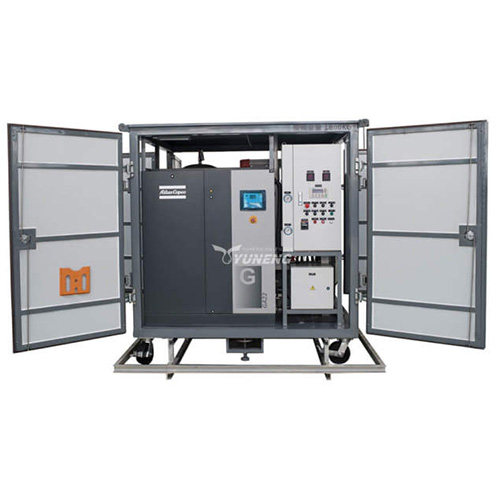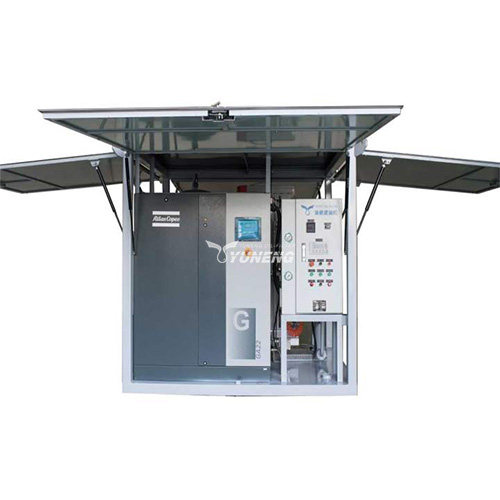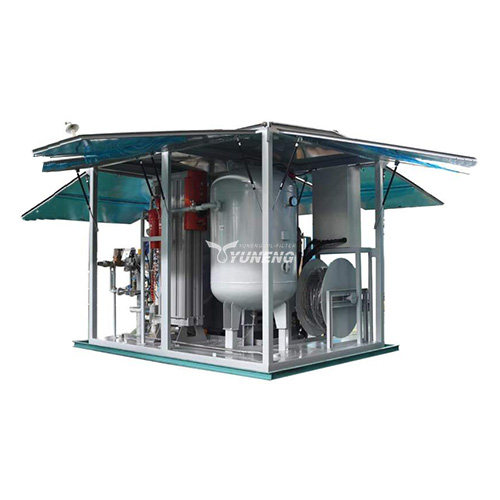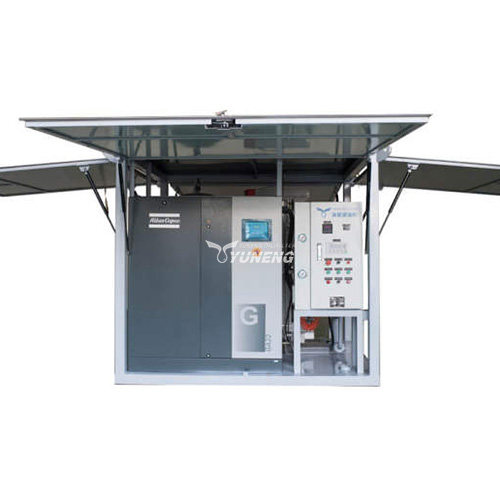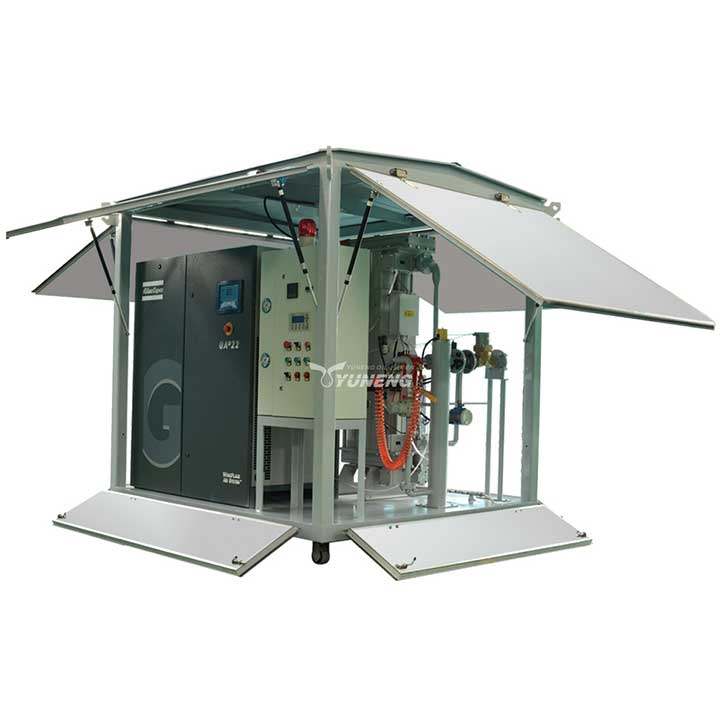Precautions for Using a Dry Air Generator in GIS Equipment Maintenance
Table of Contents
Gas-insulated switchgear (GIS) plays a pivotal role in modern power systems, offering compact design, high reliability, and minimal maintenance requirements. Its use of sulfur hexafluoride (SF6) gas as an insulating medium enables significant size reduction compared to traditional air-insulated switchgear. However, proper maintenance of GIS, especially concerning moisture control, is crucial to ensure its long-term performance and safety. Dry air generators are indispensable tools in this process, providing a controlled environment for maintenance and preventing potential issues caused by humidity.
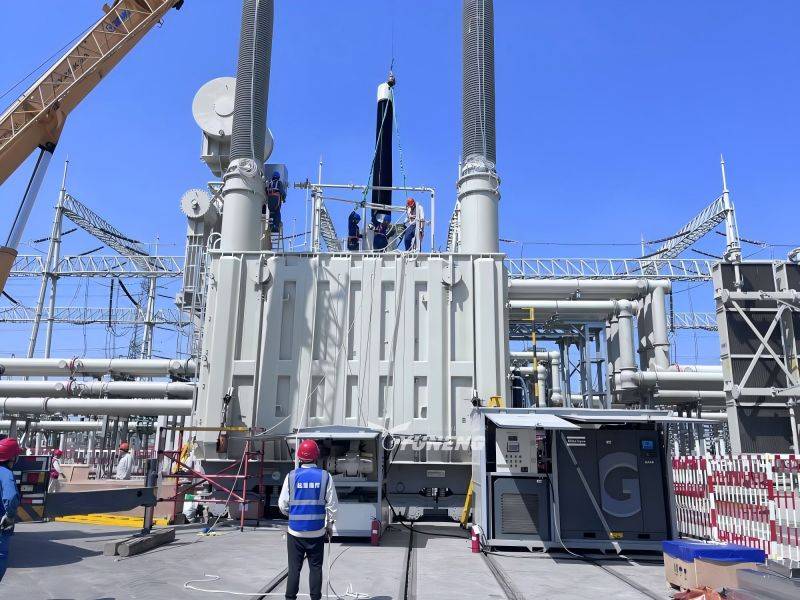
Understanding Gas-Insulated Switchgear (GIS) and Sulfur Hexafluoride (SF6)
GIS is a high-voltage electrical apparatus where the major components, such as circuit breakers, disconnectors, and earthing switches, are enclosed in a sealed, gas-tight enclosure filled with SF6 gas. SF6 is an excellent dielectric gas, possessing superior insulating properties compared to air. This allows for closer spacing of components, resulting in a compact design.
Key Components in GIS
- Circuit Breakers: These are responsible for interrupting electrical circuits during faults, protecting the system from damage.
- Disconnectors: These isolate sections of the circuit for maintenance purposes, ensuring safety by providing a visible break.
- Earthing Switches: These provide a safe path for current to ground, protecting personnel during maintenance.
- Busbars: These conduct electrical current between the various components.
- Instrument Transformers: These step down voltage and current for measurement and protection purposes.
The key to GIS’s compact design and high performance is the unique properties of SF6 gas.
Sulfur Hexafluoride (SF6) Properties
- Exceptional Dielectric Strength: SF6 boasts a dielectric strength approximately 2.5 to 3 times that of air at atmospheric pressure. This means it can withstand significantly higher voltages before breaking down and allowing electrical arcing. This high dielectric strength allows for closer spacing of high-voltage components, leading to the compact design of GIS.
- Chemical Inertness: At ambient temperatures, SF6 is chemically inert, meaning it does not readily react with other materials. This stability is crucial for long-term reliability within the sealed GIS enclosure.
- Non-Flammability: SF6 is non-flammable, reducing the risk of fire hazards in electrical substations.
- Global Warming Potential: A significant drawback of SF6 is its extremely high global warming potential (GWP), which is thousands of times greater than that of carbon dioxide. This makes it a potent greenhouse gas, and its release into the atmosphere is a major environmental concern.
- Decomposition Products: When subjected to electrical arcs or partial discharges, SF6 decomposes, producing various byproducts, some of which are highly toxic and corrosive. These byproducts include sulfur tetrafluoride (SF4), sulfur dioxide (SO2), and hydrogen fluoride (HF). Proper handling and disposal of SF6 are essential to mitigate these risks.
The Critical Importance of Moisture Control in GIS
Moisture within a GIS enclosure can severely compromise its performance and safety. Here’s a detailed look at the consequences:
- Reduction in Dielectric Strength: Moisture reduces the dielectric strength of SF6 gas, making it more susceptible to electrical breakdown. Water vapor molecules can act as initiation points for electrical discharges, lowering the voltage at which arcing occurs.
- Corrosion: Moisture can react with SF6 decomposition products, forming corrosive substances that can damage internal components, particularly metallic surfaces. This corrosion can lead to equipment failure and reduced lifespan.
- Formation of Conductive Particles: Moisture can contribute to the formation of conductive particles within the GIS enclosure. These particles can become trapped in the electric field, leading to flashovers and insulation failures.
- Increased Risk of Partial Discharges: Partial discharges are localized electrical discharges that occur within insulation systems. Moisture can increase the likelihood and severity of partial discharges, which can degrade insulation over time and eventually lead to complete breakdown.
- Increased creation of dangerous byproducts: Moisture combined with SF6 arcs will increase the production of HF and other dangerous byproducts.
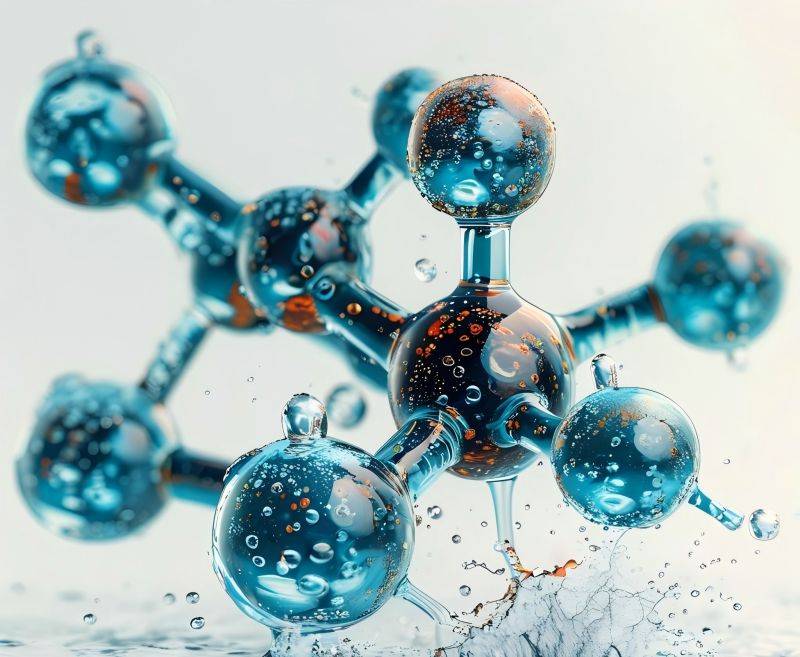
Safety Measures: A Paramount Consideration in GIS Maintenance
Working with Gas-Insulated Switchgear (GIS) presents a unique set of hazards due to the combination of high-voltage electrical equipment and sulfur hexafluoride (SF6) gas. Therefore, strict adherence to comprehensive safety protocols is absolutely essential to protect personnel and prevent accidents.
1. SF6 Gas Handling: Prioritizing Environmental and Personal Safety
Adequate Ventilation:
- SF6, while inert at ambient temperatures, can displace oxygen in confined spaces, leading to asphyxiation. Therefore, ensuring proper ventilation in the work area is critical.
- For indoor maintenance, use forced ventilation systems to circulate fresh air and exhaust any potential SF6 leaks.
- Consider the use of SF6 gas detectors with alarms to continuously monitor the concentration of the gas in the work environment.
Certified SF6 Gas Recovery and Handling Equipment:
- Utilize equipment specifically designed for SF6 recovery, storage, and handling. This equipment should be certified to meet industry standards and regulations.
- Ensure that the equipment is regularly inspected and maintained to prevent leaks and malfunctions.
- Properly train all personnel on the correct operation of SF6 handling equipment.
Proper Disposal and Recycling:
- SF6 is a potent greenhouse gas, and its release into the atmosphere must be minimized.
- Adhere to local and international environmental regulations for the disposal and recycling of SF6 gas.
- Work with certified SF6 recycling facilities to ensure proper handling and destruction of the gas.
- When the SF6 gas has been contaminated by arcing or partial discharge, the byproducts within the gas must be removed before the gas can be reused.
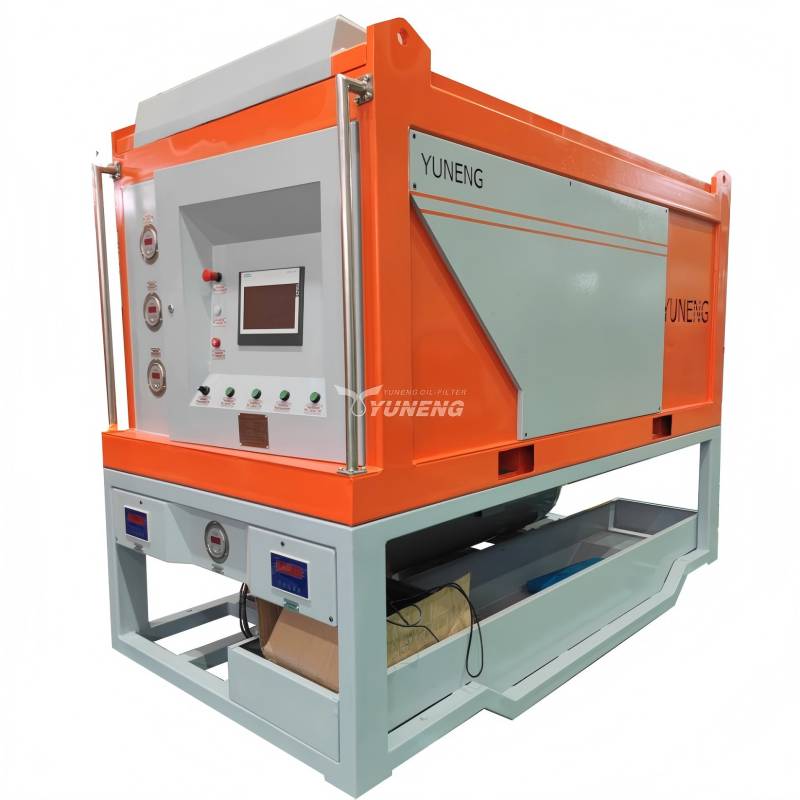
2. Electrical Safety: Safeguarding Against High-Voltage Hazards
De-energization and Voltage Verification:
- Before commencing any maintenance work, completely de-energize the GIS equipment.
- Use calibrated voltage detectors to verify the absence of voltage on all conductors.
- Implement a lockout/tagout (LOTO) procedure to prevent accidental re-energization.
- Double and triple check that the equipment is de-energized.
Proper Grounding Procedures:
- Apply grounding clamps to all conductors to provide a safe path for current to ground.
- Ensure that grounding connections are secure and properly rated for the fault current.
- Use grounding cables of sufficient size and conductivity.
- Grounding of all sides of the work area is very important.
Insulated Tools and Personal Protective Equipment (PPE):
- Use insulated tools that are rated for the voltage level of the GIS equipment.
- Wear appropriate PPE, including insulating gloves, safety glasses, and flame-resistant clothing.
- Consider the use of arc flash protection clothing in areas where arc flash hazards are present.
- PPE must be inspected before each use.
3. Dry Air Generator Operation: Ensuring Safe and Reliable Performance
Manufacturer’s Operating Instructions:
- Thoroughly read and understand the manufacturer’s operating instructions before using the dry air generator.
- Follow the recommended operating procedures and maintenance schedules.
- Improper operation can cause damage to the machine and create a dangerous situation.
Regular Inspections:
- Conduct regular inspections of the dry air generator to check for leaks, malfunctions, and wear and tear.
- Pay close attention to the condition of hoses, connections, and filters.
- Check the generator’s moisture removal system and ensure that it is functioning properly.
Proper Grounding:
- Ensure that the dry air generator is properly grounded to prevent electrical hazards.
- Use grounding cables of sufficient size and conductivity.
- This is especially important in high voltage substations.
- By implementing these detailed safety measures, maintenance personnel can significantly reduce the risks associated with GIS maintenance and ensure a safe working environment.
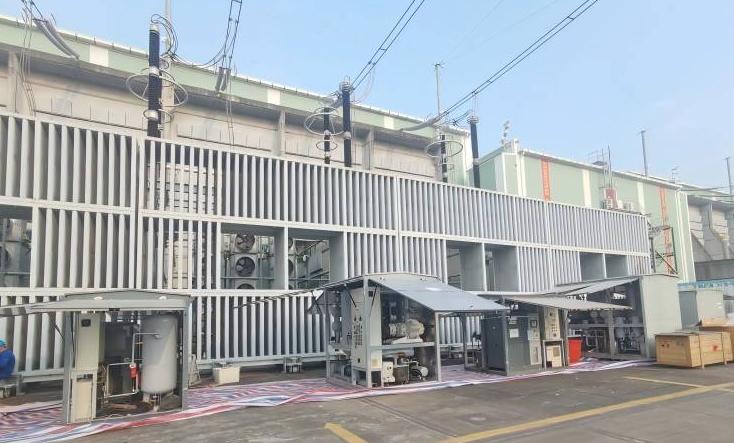
Maintenance Procedures: Ensuring Longevity and Reliability of GIS
Maintaining Gas-Insulated Switchgear (GIS) involves a series of critical procedures to uphold its performance and prevent potential failures.
1. Humidity Control: Maintaining Dielectric Integrity
Calibrated Humidity Sensors:
- Employ calibrated electronic humidity sensors, specifically designed for SF6 environments, to accurately measure the moisture content within the GIS enclosure.
- Ensure that these sensors are regularly calibrated against traceable standards to maintain accuracy.
- Install sensors at multiple points within the GIS compartment to provide a comprehensive understanding of the humidity distribution.
- Log sensor readings at regular intervals to establish a baseline and track humidity trends.
Manufacturer’s Humidity Specifications:
- Adhere strictly to the humidity levels specified by the GIS manufacturer. These specifications are based on the dielectric strength of SF6 and the materials used in the GIS construction.
- Typically, humidity levels are expressed as dew point or relative humidity.
- Understand that temperature greatly affects the relative humidity, and that dew point is a better measurement for moisture content.
Dry Air Generator Application:
- Utilize dry air generators to purge the GIS enclosure of moisture-laden air during maintenance.
- Ensure that the dry air generator provides air with a dew point significantly lower than the manufacturer’s specifications.
- Continuously monitor the humidity levels during purging and maintenance to ensure that the target humidity is achieved and maintained.
- When refilling a GIS enclosure with SF6, dry air can be used to remove any remaining air before refilling with SF6.
2. Leak Detection: Preventing SF6 Losses and Environmental Impact
SF6 Gas Leak Detectors:
- Use calibrated SF6 gas leak detectors, specifically designed for detecting trace amounts of SF6.
- Conduct leak checks at regular intervals, particularly after any maintenance work.
- Utilize both portable and fixed leak detectors to ensure comprehensive coverage.
Seal, Gasket, and Connection Inspection:
- Visually inspect all seals, gaskets, and connections for signs of damage or deterioration.
- Pay close attention to areas where leaks are most likely to occur, such as flange connections, valve stems, and pressure relief devices.
- Use soapy water or other leak detection solutions to check for very small leaks.
Prompt Leak Repair:
- Repair any leaks promptly to minimize SF6 losses and environmental impact.
- Use approved repair methods and materials to ensure a reliable seal.
- After a repair, perform a follow-up leak check to verify the effectiveness of the repair.
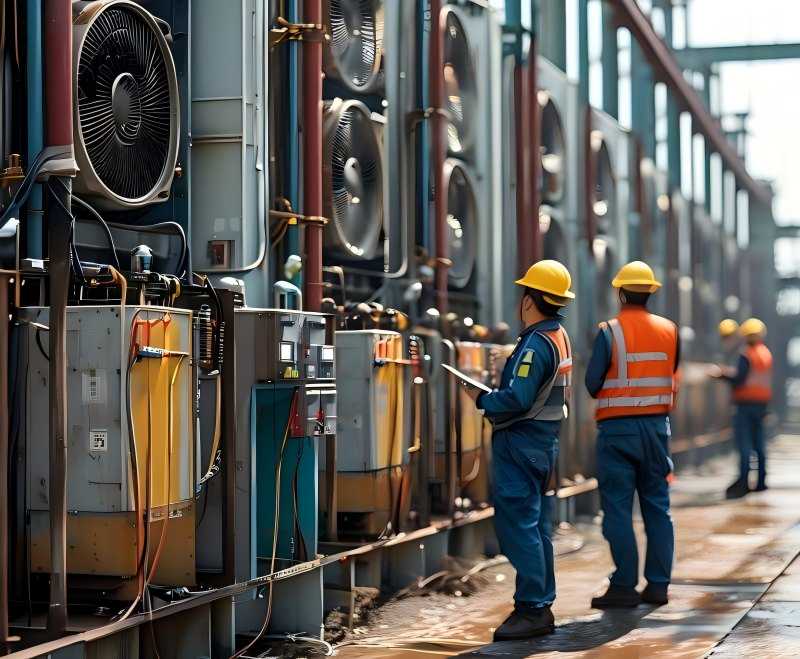
3. Internal Cleaning: Maintaining Insulation Integrity
Approved Cleaning Agents:
- Use cleaning agents that are specifically approved for use in SF6 environments.
- Avoid using cleaning agents that can leave residues or damage insulation materials.
- Ensure that all cleaning agents are compatible with the materials used in the GIS construction.
Contaminant Removal:
- Remove all contaminants, such as dust, debris, and metallic particles, from the internal components.
- Use lint-free cloths and brushes to avoid introducing new contaminants.
- Vacuum cleaning with a HEPA filter vacuum cleaner is highly recommended.
Visual Inspections:
- When the GIS enclosure is opened for maintenance, conduct thorough visual inspections of all internal components.
- Check for signs of corrosion, damage, or wear and tear.
- Pay close attention to insulation surfaces, conductors, and contact surfaces.
- Take pictures of any suspect areas.
4. SF6 Gas Purity Testing: Ensuring Dielectric Performance
Periodic Gas Analysis:
- Conduct periodic gas analysis to determine the purity of the SF6 gas and the concentration of decomposition products.
- The frequency of gas analysis should be based on the manufacturer’s recommendations and the operating conditions of the GIS.
Specialized Gas Analyzers:
- Use specialized gas analyzers that can accurately measure the concentration of impurities, such as water vapor, air, and decomposition products.
- Ensure that the gas analyzers are calibrated against traceable standards.
- There are analyzers that can be used on site, and there are laboratory based analyzers.
Gas Filtration or Replacement:
- If the gas analysis reveals that the SF6 gas is impure, it must be filtered or replaced.
- Use certified SF6 gas filtration equipment to remove impurities.
- If the gas is heavily contaminated or if the concentration of decomposition products exceeds acceptable limits, the gas must be replaced.
- When replacing the gas, it is very important to use certified SF6 gas.
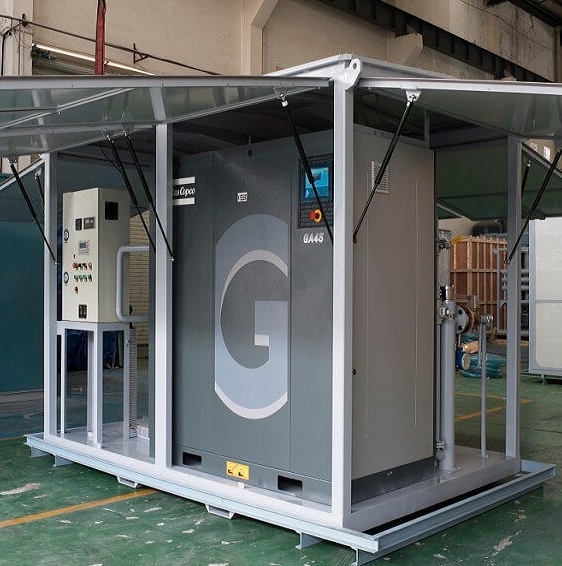
Key Considerations for Optimal GIS Maintenance
Effective maintenance of Gas-Insulated Switchgear (GIS) requires attention to several crucial factors that directly impact the reliability and longevity of the equipment.
1. Environmental Factors
The surrounding environment plays a critical role in GIS maintenance and the proper functioning of SF₆-insulated equipment. Adverse conditions such as excessive humidity, temperature fluctuations, and contamination can compromise insulation performance and lead to equipment failures.
Working Environment
- Maintaining a Controlled Atmosphere: It is essential to conduct maintenance in a dry, dust-free, and well-ventilated workspace. Moisture can degrade insulation performance, and particulate contamination can lead to electrical tracking or corrosion of GIS components.
- Preventing Humidity-Related Issues: High humidity can lead to moisture absorption in insulation materials, which increases the risk of dielectric breakdown. Using dehumidifiers or air dryers in the maintenance area helps mitigate this risk.
- Avoiding Extreme Temperature Exposure: GIS equipment should not be subjected to sudden temperature changes, as this can cause thermal expansion and contraction in sealing materials, leading to potential SF₆ gas leaks.
Impact of Temperature on SF₆ Gas
SF₆ gas exhibits temperature-dependent behavior, which can impact its insulating properties and pressure levels.
- Gas Density Variations: SF₆ gas density changes with temperature fluctuations, which can lead to false pressure readings or even insufficient insulation properties if not properly compensated.
- Use of Gas Density Monitors: It is crucial to install gas density monitors with temperature compensation to ensure accurate pressure readings under varying environmental conditions. These monitors help detect potential leaks or gas depletion before they become critical issues.
- Mitigating Temperature Effects: In areas with extreme temperature variations, additional thermal insulation for GIS enclosures or climate-controlled indoor installations can help maintain stable operating conditions.
2. Record-Keeping and Documentation
Proper documentation is essential for ensuring compliance with maintenance protocols, tracking historical data, and improving future servicing efficiency.
Importance of Maintenance Records
- Comprehensive Logging: Every maintenance activity, including gas refilling, humidity level measurements, pressure readings, and equipment inspections, should be documented in detail. This helps track equipment performance over time and detect recurring issues.
- Leak Test Documentation: All SF₆ gas leak detection tests must be recorded, including test dates, detected leak rates, and corrective actions taken. These records are critical for regulatory compliance and environmental protection.
- Regulatory Compliance: Many environmental agencies require utilities to maintain SF₆ handling logs to ensure that emissions are minimized. Proper documentation aids in meeting these regulatory standards.
Establishing a Maintenance Database
- Transition to Digital Storage: Paper-based records are prone to loss and degradation. Using digital maintenance logs and cloud-based storage systems enhances data accessibility and security.
- Automated Data Collection: Integrating GIS monitoring systems with real-time data logging improves maintenance efficiency and reduces the risk of human error.
- Historical Data Analysis: A well-maintained database enables trend analysis, helping maintenance teams predict potential failures and schedule preventive maintenance accordingly.
3. Personnel Expertise and Training
GIS maintenance requires specialized knowledge and skills, particularly when handling high-voltage equipment and SF₆ gas. Ensuring that personnel are well-trained and certified minimizes safety risks and enhances maintenance quality.
Technician Qualifications
- Certification Requirements: Maintenance personnel should obtain certifications in SF₆ gas handling, high-voltage safety procedures, and GIS maintenance techniques from recognized industry organizations.
- Understanding GIS Components: Technicians must be familiar with GIS design, gas compartments, sealing systems, and diagnostic tools to conduct effective maintenance.
- Safety Protocol Compliance: Personnel should be well-versed in emergency response plans, SF₆ gas handling safety, and proper use of protective equipment to minimize risks.
Ongoing Training
- Regular Skill Upgrades: Conducting periodic training sessions and hands-on workshops helps technicians stay updated on the latest GIS maintenance best practices and technological advancements.
- Simulation-Based Training: Utilizing VR or simulation software for GIS maintenance training enhances understanding of complex procedures without the risks associated with real equipment handling.
- Knowledge Sharing and Documentation: Establishing internal knowledge-sharing programs allows experienced technicians to mentor new personnel, ensuring continuous improvement in maintenance practices.
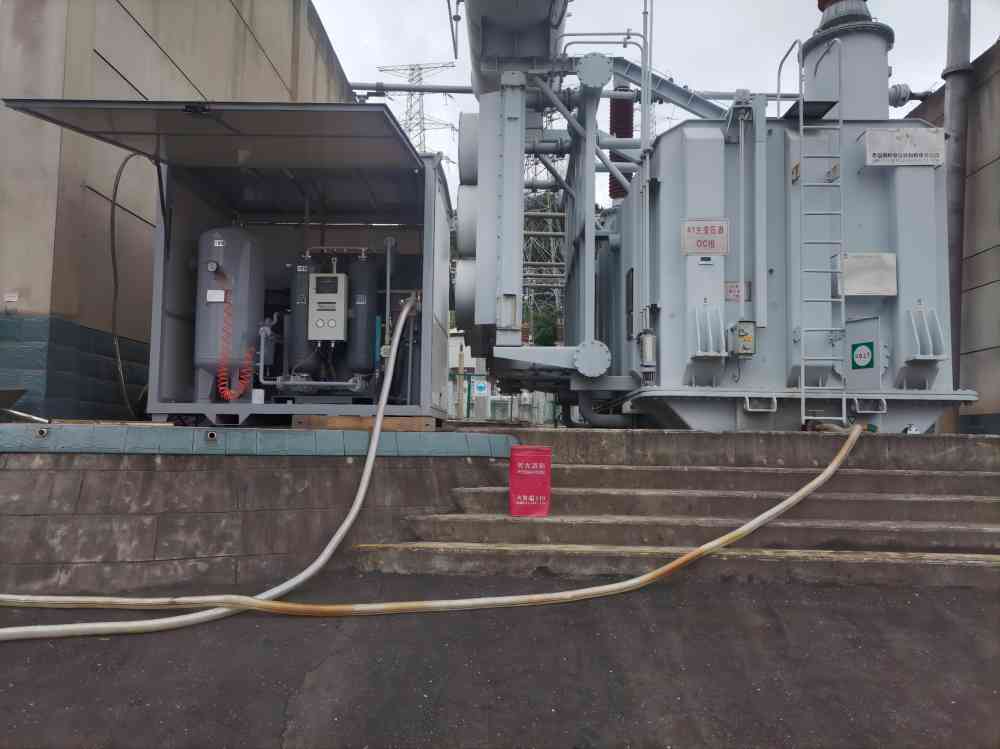
Conclusion
Maintaining GIS switchgear using a dry air generator is a crucial task that requires strict adherence to safety measures, precise humidity control, and effective leak detection techniques. Proper handling of SF₆ gas, thorough sealing inspections, and regular monitoring of environmental conditions can significantly enhance GIS reliability and operational lifespan.
By implementing advanced diagnostic tools, maintaining comprehensive records, and ensuring skilled personnel perform maintenance, utilities can minimize failures, improve efficiency, and reduce the environmental impact of SF₆ emissions.

